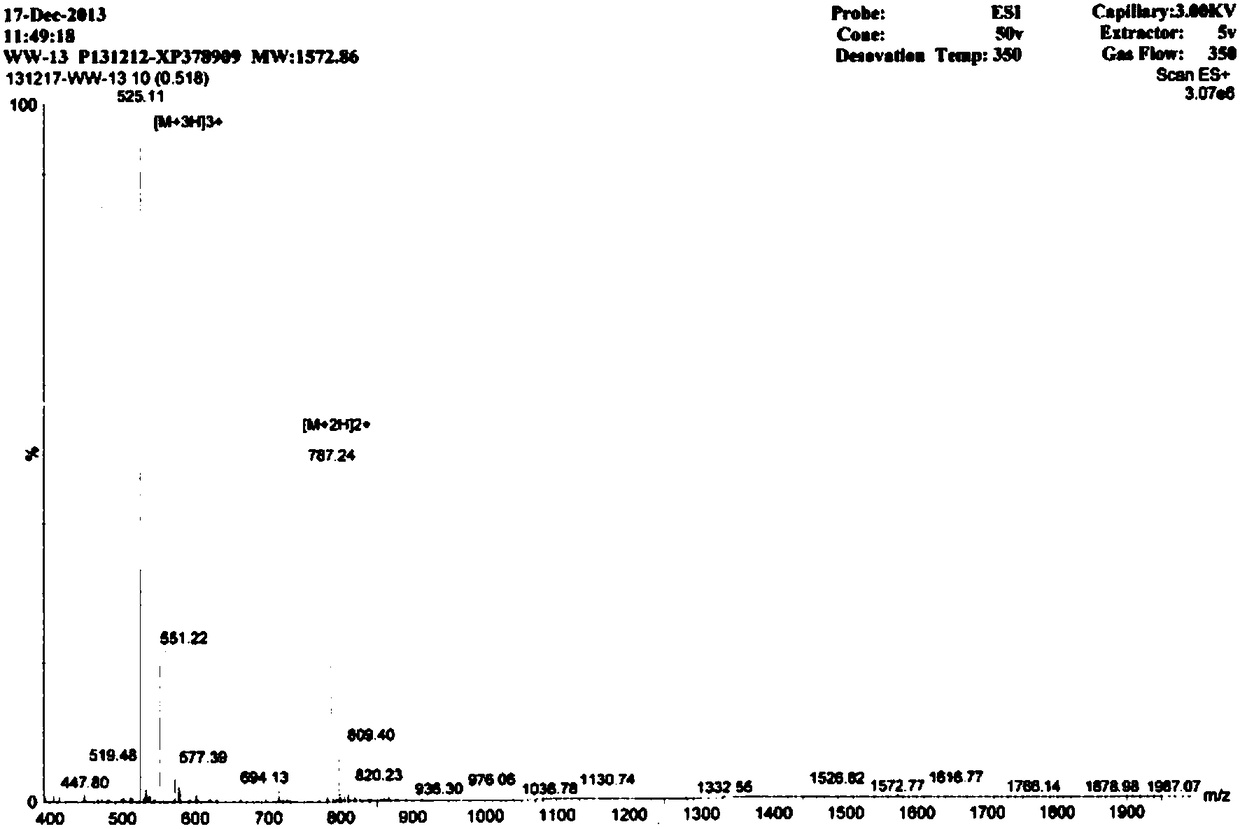Antimicrobial peptide ww based on micropeptide strategy and its preparation method and application
A technology of antimicrobial peptides and strategies, applied in the biological field, can solve the problems of rejection, allergic reactions, and immunogenic reactions
- Summary
- Abstract
- Description
- Claims
- Application Information
AI Technical Summary
Problems solved by technology
Method used
Image
Examples
Embodiment 1
[0018] Design of Antimicrobial Peptides
[0019] Based on the dermaseptin family secreted by amphibian frog skin, the micropeptide strategy is adopted. The dermaseptin family is composed of 55 peptides, which are retrieved from the APD database, and their antibacterial activity is not less than 100 micromolar; Some parameters of the dermaseptin family were designed, and at the same time, the necessary design to improve the activity was added to WW, such as the introduction of Trp at both ends, symmetrical structure, etc. Although WW is derived from this family, it has the same characteristics as the 55 parent peptides. Compared with the 55 parent peptides, there are obvious differences, and then compared with the 55 parent peptides, there is no comparability. In order to illustrate its activity, we used the common antimicrobial peptide melittin as a control, which can show that the design of WW is successful.
[0020] The key physical parameters are retained as shown in Table...
Embodiment 2
[0027] Synthesis of WW Antimicrobial Peptide by Solid Phase Chemical Synthesis
[0028] 1. The preparation of antimicrobial peptides is carried out one by one from the C-terminal to the N-terminal, and is completed by a peptide synthesizer. First, Fmoc-X (X is the first amino acid at the C-terminal of each antimicrobial peptide) is inserted into Wang resin, and then the Fmoc group is removed to obtain X-Wang resin; then Fmoc-Y-Trt-OH (9 -Fmoxy-trimethyl-Y, Y is the second amino acid at the C-terminus of each antimicrobial peptide); according to this procedure, it is synthesized from the C-terminus to the N-terminus until the synthesis is completed, and the side of the Fmoc group is removed chain protection resin;
[0029] 2. Add a cleavage reagent to the peptide resin obtained above, react for 2 hours at 20°C in the dark, filter; wash the precipitate with TFA (trifluoroacetic acid), mix the washing liquid with the above filtrate, concentrate with a rotary evaporator, and then...
Embodiment 3
[0032] Embodiment 3: the mensuration of antimicrobial peptide antibacterial activity
[0033] 1. Determination of antibacterial activity: Prepare the peptide as a storage solution for use. The minimum inhibitory concentrations of several antimicrobial peptides were determined by the broth microdilution method. Using 0.01% acetic acid (containing 0.2% BSA) as the diluent, a series of gradient antimicrobial peptide solutions were sequentially prepared using the double dilution method. Take 100 μL of the above solution and place it in a 96-well cell culture plate, then add an equal volume of the bacteria solution to be tested (~10 5 individual / mL) in each well. Positive controls (containing bacterial fluid but not antimicrobial peptides) and negative controls (neither bacterial fluid nor peptides) were set up. Incubate at a constant temperature of 37°C for 20 hours, and the minimum inhibitory concentration is the one where no turbidity is seen at the bottom of the well with th...
PUM
 Login to View More
Login to View More Abstract
Description
Claims
Application Information
 Login to View More
Login to View More - R&D
- Intellectual Property
- Life Sciences
- Materials
- Tech Scout
- Unparalleled Data Quality
- Higher Quality Content
- 60% Fewer Hallucinations
Browse by: Latest US Patents, China's latest patents, Technical Efficacy Thesaurus, Application Domain, Technology Topic, Popular Technical Reports.
© 2025 PatSnap. All rights reserved.Legal|Privacy policy|Modern Slavery Act Transparency Statement|Sitemap|About US| Contact US: help@patsnap.com



